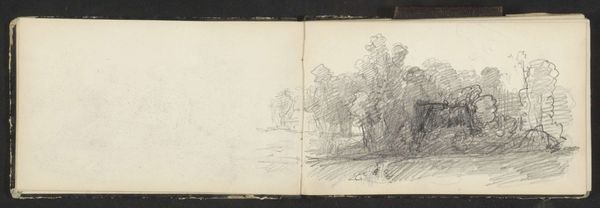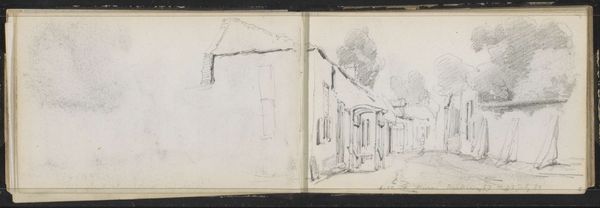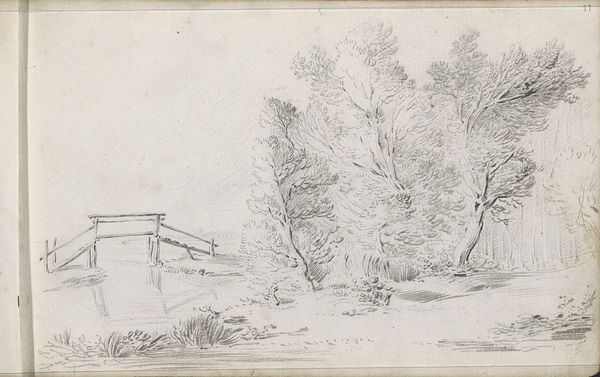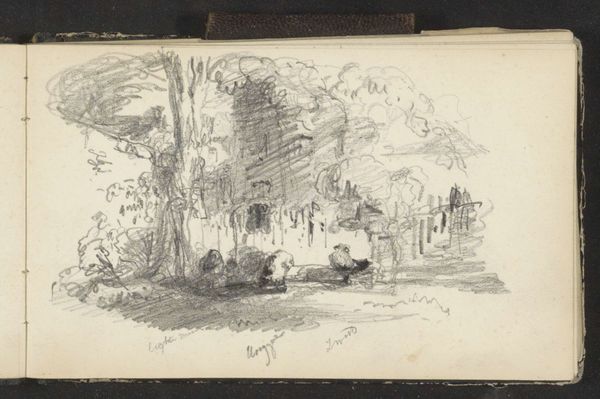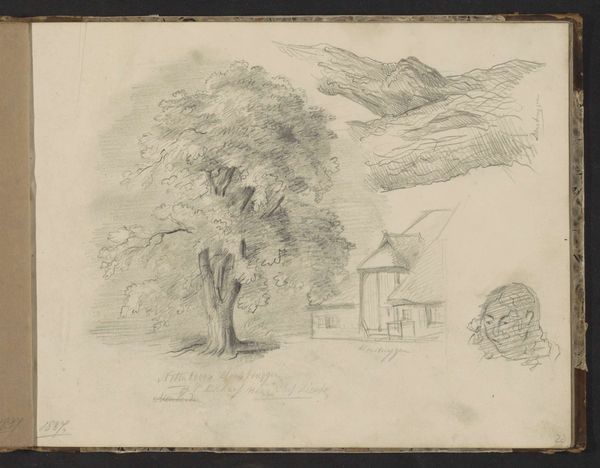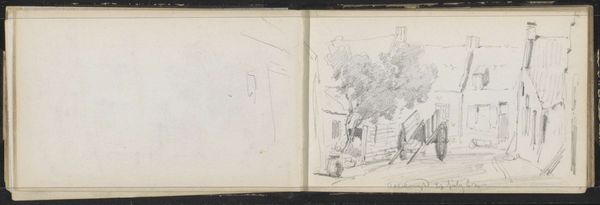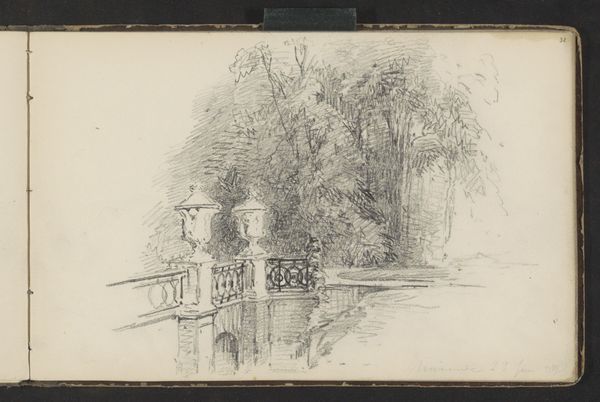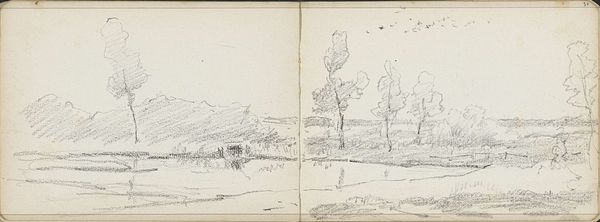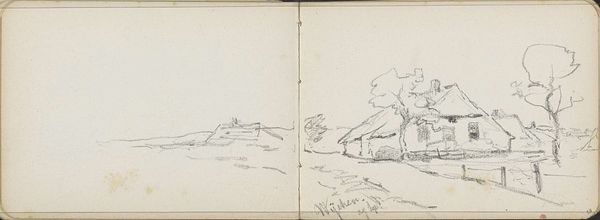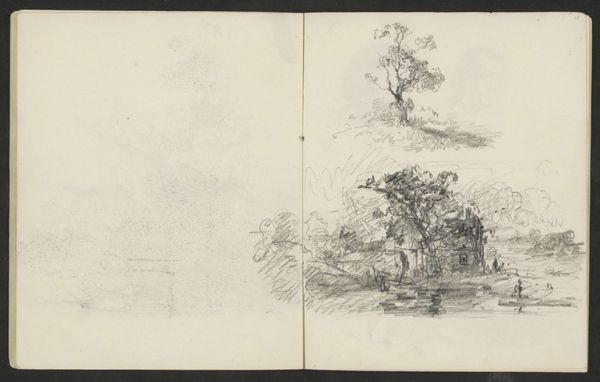
Copyright: Rijks Museum: Open Domain
Curator: This drawing, attributed to Maria Vos and dating from around 1871-1878, is titled "Vakwerkhuis tussen de bomen aan de voet van een berg," which translates to "Half-timbered house among the trees at the foot of a mountain." It’s currently held here at the Rijksmuseum. What are your first thoughts? Editor: There’s a sense of solitude about it, isn’t there? The sketch-like quality emphasizes the remoteness, this dwelling nestled against the mountain seems almost swallowed by the landscape. Curator: Indeed. Let's consider the cultural context. This was a period when artists were increasingly drawn to representing the rural and vernacular. There's a focus here on the details of the traditional architecture. Vos uses pen and pencil to articulate the wooden beams and the way the house integrates with its surroundings. But where do you place such imagery within societal norms and movements? Editor: I’m wondering about who inhabits or *could* inhabit that house and how those figures—perhaps people existing on the margins—would reflect contemporary class disparities and land ownership questions. How would showing *this* subject situate an artist's practice within the conversations and concerns of the era? This intimate glimpse may be as revealing about social ideologies as it is about art trends. Curator: I agree. The absence of figures also speaks volumes, potentially echoing larger trends like urbanization. Perhaps it evokes anxieties about rural decline? We see how Vos focuses not on grand narratives or portraits, but on documenting a changing world at a more granular scale, inviting viewers to contemplate their own place within it. Editor: I think examining her intentions – Was this a picturesque rendering of rural charm, or a commentary on displacement and a vanishing way of life? – could also show how these representations of a quickly changing landscape become potent, political, or social messaging. And I wonder too, what about the space next to the drawing – who fills that space, then? How would these questions sit with feminist theory, especially regarding her positioning as a female artist? Curator: Well, it highlights the multiple interpretive layers embedded even in a seemingly simple landscape sketch. The artwork becomes a dialogue itself! Editor: Absolutely! By exploring social, cultural, and feminist interpretations of Maria Vos’ work, we gain an enriched understanding of the artist herself, of course, and a particular point in time. Thanks!
Comments
No comments
Be the first to comment and join the conversation on the ultimate creative platform.
